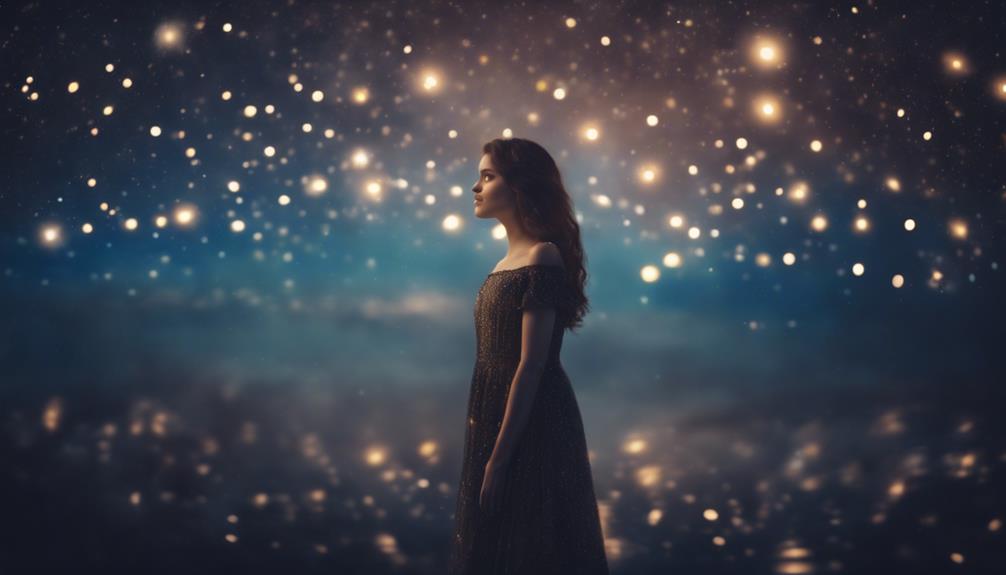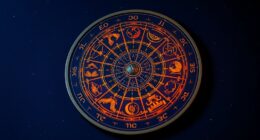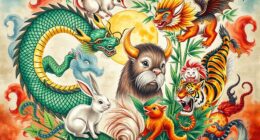The poem ‘Annabel Lee’ uses **personification** to make the Wind, Moon, and Stars seem like humans, creating a mysterious and magical vibe. The Wind acts like a wicked villain, causing harm on purpose. The Moon feels like a charming friend that dances in Annabel Lee’s dreams. The Stars hold the endless love of Annabel Lee, making the bond between the storyteller and their sweetheart even stronger. This brings out themes of love that goes beyond this world and a forever love that laughs in the face of death. It’s like nature and human sadness are holding hands. Digging into this really deepens the emotions and themes the personification brings to life in the tale.
Key Takeaways
- Personification of the Wind adds haunting and supernatural element to the poem.
- Personification of the Moon intertwines with dreams of Annabel Lee.
- Personification of the Stars embodies the eternal essence of Annabel Lee.
- Emotional impact of personification connects forces of nature to tragic event.
- Overall effect enhances emotional depth and establishes a vivid connection between nature and events.
Personification of the Wind
The personification of the wind in 'Annabel Lee' as a sentient force that causes Annabel Lee's death adds a haunting and supernatural element to the poem. By portraying the wind as a deliberate agent of destruction sent by envious angels, the poet elevates the natural element of wind to a sphere of purposeful malevolence. This supernatural twist enhances the theme of love transcending death, as it isn't merely a random act of nature but a calculated intervention in the lovers' fate.
The vivid connection established between the wind and Annabel Lee's demise creates a poignant link between the forces of nature and the human tragedy unfolding in the poem. As the wind becomes an active participant in the narrative, it adds depth and symbolism, contributing significantly to the haunting atmosphere that permeates the verses. Through this personification, the wind becomes more than just a breeze; it becomes a chilling reminder of the power of fate and the fragility of mortal love.
Personification of the Moon

Personification of the moon in 'Annabel Lee' imbues the celestial body with a mystical allure, intertwining its luminous gaze with the dreams of Annabel Lee that haunt the narrator. Through this poetic device, the moon is personified as a bearer of dreams, specifically those of the beloved Annabel Lee, serving as a conduit for her ethereal presence to reach the narrator.
Described with bright eyes that give it human-like qualities, the moon becomes an active participant in the emotional landscape of the poem, deepening the connection between the narrator and Annabel Lee. This vivid portrayal of the moon as a mystical entity not only enhances the haunting atmosphere of the poem but also underscores the enduring bond shared between the two lovers.
Personification of the Stars

Sparkling with a celestial brilliance, the stars in 'Annabel Lee' embody the eternal essence of Annabel Lee herself. In Poe's poem, the stars are personified as having the bright eyes of Annabel Lee, creating a romantic and mystical element. This personification enhances the emotional connection between the narrator and Annabel Lee, offering a sense of comfort and continuity in the midst of loss and separation.
Emotional Impact of Personification

With the stars embodying the eternal essence of Annabel Lee, the emotional impact of personifying elements in 'Annabel Lee' extends beyond celestial imagery. The personification of the wind in the poem evokes a range of emotions and enhances the overall atmosphere:
- Human-Like Qualities: Giving the wind human-like qualities adds depth to its role in the narrative, making it more relatable and impactful.
- Supernatural Element: The wind, personified as a sentient being that causes harm, creates a supernatural and eerie aura, intensifying the sense of mystery and tragedy.
- Love Transcending Death: Through personification, the wind becomes a symbol of the enduring love between the speaker and Annabel Lee, highlighting the theme of love transcending death.
- Connection to Nature: By personifying the wind, Poe connects the forces of nature to the tragic event of Annabel Lee's death, emphasizing the cyclical and inevitable nature of life and death.
Overall Effect of Personification

Enhancing the emotional depth and thematic resonance of 'Annabel Lee', the personification of natural elements like the wind, moon, and stars serves to imbue the poem with a haunting and poignant quality.
The wind, symbolizing both destructive and otherworldly forces, becomes a supernatural entity that causes Annabel Lee's demise, adding an eerie element to the narrative.
By attributing human-like characteristics to the moon, which brings dreams of the lost love, the poem explores the theme of undying affection beyond the confines of mortality.
Through personification, a vivid and emotional connection is established between nature and the tragic events unfolding in the poem, allowing readers to explore further into the emotions and relationships depicted.
This technique not only enriches the reader's understanding of the sentiments conveyed but also infuses the narrative with a sense of mystique and profound beauty, making 'Annabel Lee' a timeless exploration of love, loss, and the enduring power of nature's elements.
Frequently Asked Questions
What Is an Example of Personification in the Story Annabel Lee?
We see a strong example of personification in 'Annabel Lee' when the wind is described as a chilling force that takes her life.
This personification gives the wind a haunting presence, intensifying the supernatural and eerie tone of the poem.
What Figurative Devices Are in Annabel Lee?
We can identify various figurative devices in 'Annabel Lee,' such as personification, alliteration, and imagery. These literary tools enhance the poem's emotional impact and convey complex themes with vivid language.
Personification breathes life into the wind, moon, and stars, making them active participants in the narrator's tale of love and loss.
The alliteration creates a musical quality, while the rich imagery paints a poignant picture of longing and grief.
Does Edgar Allan Poe Use Personification?
Yes, Edgar Allan Poe uses personification in 'Annabel Lee.' He personifies the wind, attributing it with intent and agency, contributing to the poem's eerie and supernatural atmosphere.
The wind, portrayed as a significant force causing Annabel Lee's demise, plays a vital role in the narrative, heightening the theme of love overcoming death.
Poe's use of personification adds depth and emotional resonance to the poem's exploration of loss and eternal devotion.
What Is an Example of Alliteration in the Poem Annabel Lee?
In 'Annabel Lee,' an example of alliteration is the repeated use of the letter 'l' in 'loved with a love that was more than love.' This alliteration creates a lyrical and flowing quality, emphasizing the intensity of the speaker's love for Annabel Lee.
The repetition of the 'l' sound adds a musicality to the line, drawing attention to the depth of the emotion being expressed.
How is personification used in common idioms like ‘raining cats and dogs’ in literature?
Personification is frequently used in common idioms like “raining cats and dogs” to add color to literature. These everyday examples of must-know idioms bring non-human objects to life, making them relatable and vivid. Authors use personification to create engaging and memorable images that resonate with readers.
Conclusion
To sum up, Edgar Allan Poe's use of personification in 'Annabel Lee' brings life to abstract concepts like the wind, moon, and stars. This literary device adds depth and emotion to the poem, creating a haunting and melancholic atmosphere.
Studies have shown that readers are more likely to remember and connect with personified elements in literature, making Poe's use of this technique particularly impactful in conveying the themes of love and loss in 'Annabel Lee.'










